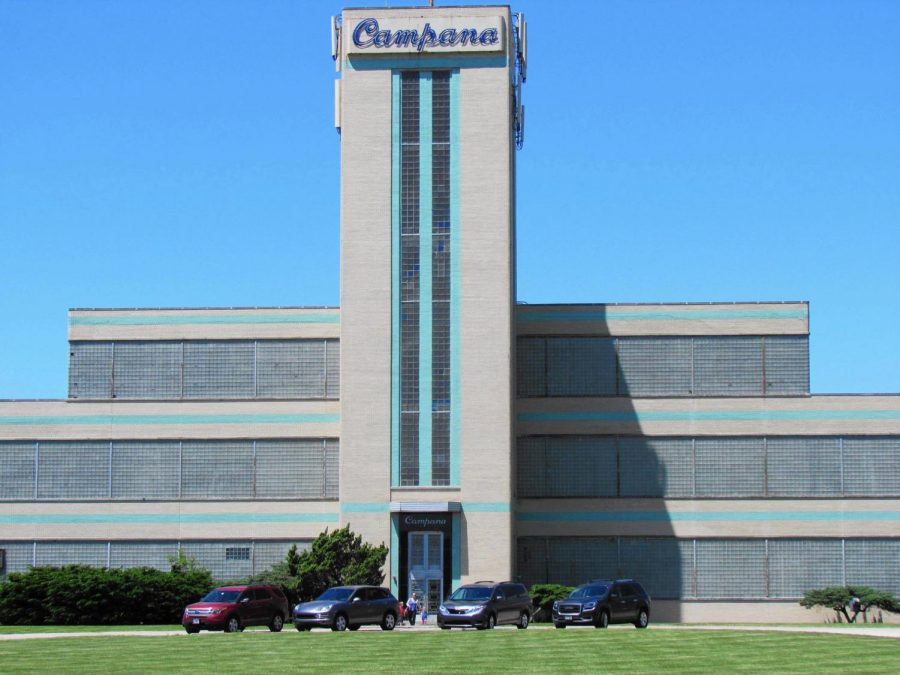The Campana Building and the tension over Fabyan Parkway
The months-long tension spanning across Fabyan Parkway over the proposal of transforming the historic Campana Building into low-income housing has been passed onto one of the final stages of development.
After going through the Batavia Plan Commission on September 6th following endless deliberation, the proposed project of converting the iconic building into low-income housing will now be passed onto the Batavia City Council. However, per Batavia Alderman Dan Chanzit, the final verdict by the Commission was a long time coming.
“[The public hearings] were outrageous… it took a ridiculous amount of time.” Chanzit said of the deliberations. The project, which is located in his ward, experienced nearly twelve hours of combined testimony from concerned residents. The public hearings took place across three nights in the past two months, and the Plan Commission heard from scores of residents of both Geneva and Batavia.
“As a city, we really wanted to hear what everyone had to say. We wanted to give everyone that opportunity and the council let in every single resident that wanted to come in and voice their opinion.”
This particular project is no stranger to controversy, as its been facing criticism since its initial proposal to the council early this year. After passing what the aldermen refer to as the ‘heart-attack test’, which is simply a way for developers to pitch their idea to see what the initial reaction from the aldermen is, it’s been facing opposition from community members.
Ever since the project was announced to the public in the spring, signs have sprung up in the lawns of houses in nearby neighborhoods, urging everyone to say ‘No to Campana’. A website of the same name appeared on the internet as well. Similar signs appeared just days after the first batch, however these were encouraging people to vote ‘Yes to Campana’ instead.
For people opposing the project, a large topic of discussion is the traffic in the area surrounding the building and the aspect of an old factory being converted into housing units. The notoriously accident-prone intersection at Fabyan and Route 31 has seen 70 major car crashes since 2014.
To combat traffic increases, Evergreen Real Estate Group, the group proposing Campana, has disclosed in their public presentation that they are, “willing to dedicate part of the Campana site to IDOT [Illinois Department of Transportation] for future roadway improvements.”
The building, which is located on the National Register of Historic Places, was built in 1936 and operated as a cosmetic factory for decades. There are currently business tenants in the original building and the north addition, however the rest of the building remains vacant.
Major improvements will be needed to convert the factory into approximately 80 housing units, and many people opposing the project wonder how the developers plan to go about designing comfortable living spaces for families.
“There are different ways you can use space. Get creative and you can make a space that is livable.” Chanzit said, also adding in that the developers have come up with a way to make windows that are easier to see out of, as opposed to the ones currently in the building that are opaque.
However, above all, the biggest problem plaguing the council is the claim that Batavia is voting upon something that will primarily be effecting Geneva. Unknown to most people, the Campana Building property belongs to the City of Batavia despite being on what is considered to be the ‘Geneva side’ of Fabyan.
This common misconception has led many residents to be confused as to where students will attend school, as well as wonder which police department will oversee the building. To this Chanzit explained, “Lines for cities, and lines for school districts and park districts and libraries are not always congruent. So technically, you’ll have somebody living in Batavia and attending Geneva schools because the Geneva school district boundary is not congruent there.”
This feud on who owns the building dates back all the way to when the building was first built. At the time, Geneva was not able to support the infrastructure needed to operate such a large factory, and because of that Batavia claimed the property as their own. Many people assume that the building belongs to Geneva since it’s located on the North side of Fabyan, however that is actually not the case.
“The truth is, they [Geneva] had the opportunity to have this be a part of the town but they couldn’t provide the services to support it. So, that’s kind of how we got put into this predicament.”
If this proposal is to go through the Council, it would be a monumental decision that has been a long time coming. From an old cosmetic factory, to being an empty building for years, the Campana Building now has the potential to change the Tri-Cities forever. According to Chanzit however, we’ve only seen the beginning of the long road to the final decision.
“I have a lot of questions to ask at the meeting…sidewalk accessibility, traffic is an issue. The cellphone tower on top as well. We have a bunch of issues we’re going to start talking about all together.” Chanzit said. The aldermen met to discuss the development for the first time all together since the project’s inception earlier this month.
The future of the Campana Project now rests in the hands of the Batavia City Council now, who have already begun their meetings to discuss where to go from here. Despite the project entering what’s considered to be one of the last steps before the final verdict, it should be expected to be a while until we see the decision of the proposal officially made. However, we’ve already began to see the start of a new Batavia.











